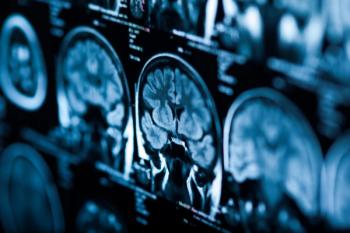
Lower estradiol linked to abdominal aortic calcification risk
In a recent study, postmenopausal women in lower Tertiles of Estradiol concentration experienced an increased prevalence of abdominal aortic calcification.
Postmenopausal women with reduced Estradiol (E2) levels are more likely to experience abdominal aortic calcification (AAC), according to a recent study published in Fronteirs in Endocrinology.1
Common symptoms of menopause include hot flashes, night sweats, sleep disturbances, genitourinary discomfort, bone loss, obesity, low libido, mood swings, and cognitive changes. These symptoms are caused by a decline in estrogen levels during menopause, leading postmenopausal women to take E2 therapy.
Other benefits have also been linked to estrogen therapy, such as a decreased risk of urinary tract infections (UTIs) through the application of vaginal estrogen.2 In a recent study statistically significant improvements in urinary symptoms were reported among women taking vaginal estrogen, and recurrent UTIs were less likely among these patients.
AAC is defined as the deposit of calcium and phosphate-based minerals in the walls of the abdominal area, leading the aortic walls to experience irreversible calcification and become brittle.1 Along with being a significant predictor for cardiovascular disease, AAC is an indicator of all-cause mortality and cardiovascular mortality.
There is little data about the specific mechanisms linking decreasing estradiol levels to cardiovascular risk. Therefore, investigators conducted a study to evaluate the association between E2 levels and AAC in postmenopausal women.
Participants included respondents of the National Health and Nutrition Examination Survey. A postmenopausal state was identified in these patients based on 12 consecutive months without regular menstruation. Respondents who were male, aged under 45 years, or missing menstruation data were excluded from the analysis.
Participants were grouped based on E2 tertiles, with cohorts including Tertile 1 at 2.12 to 3.57 pg/mL, Tertile 2 at 3.60 to 7.04 pg/mL, and Tertile 3 at 7.06 to 38.4 pg/mL. Estrogen concentrations in patients were evaluated using the formula “ln ( E 2 ) = ln ( E 2 , pg/mL ).”
Extensive ACC (EACC) prevalence was reported as the primary outcome of the analysis, with the AAC-24 semiquantitative technique (Kauppila 1997) used to evaluate the degree and extent of ACC. Prominent arterial calcification indicating EACC was determined by an AAC-24 score over 5.
Additional data collected included age, sex, and ethnicity. Questionnaire responses were assessed for information about smoking, drinking, hypertension, and diabetes mellitus (DM).
There were 614 postmenopausal women included in the final analysis. EAAC rates were 16.6% in Tertile 1, 9.8% in Tertile 2, and 8.3% in Tertile 3, indicating significantly increased EACC prevalence among women with reduced E2 levels.
These patients were also older, more likely to have DM, and had higher triglycerides and lower low-density lipoprotein cholesterol levels. Overall, the risk of EAAC prevalence increased 54% for each unit decrease in ln(E2). After adjusting for cofounders, this increase was 58%.
EAAC risks were significantly increased in Tertile 1 and Tertile 2 when compared to Tertile 3, with odds ratios ORs) of 2.19 and 1.19, respectively. These ORs were 2.55 and 1.31, respectively, in the adjusted model. Similar results were reported when evaluating women aged over 45 years.
These results indicated an association between reduced E2 levels and an increased prevalence of ACC. Investigators concluded E2 is crucial for managing cardiovascular health in postmenopausal women.
References
- He L, Li X, Shen E, He YM. Association between serum estradiol levels and abdominal aortic calcification in postmenopausal woman: a cross-sectional study. Front Endocrinol (Lausanne). 2024;15:1411803. doi:10.3389/fendo.2024.1411803
- Krewson C. Vaginal estrogen for treatment of urinary symptoms. Contemporary OB/GYN. June 8, 2023. Accessed October 7, 2024.
https://www.contemporaryobgyn.net/view/vaginal-estrogen-for-treatment-of-urinary-symptoms
Newsletter
Get the latest clinical updates, case studies, and expert commentary in obstetric and gynecologic care. Sign up now to stay informed.











